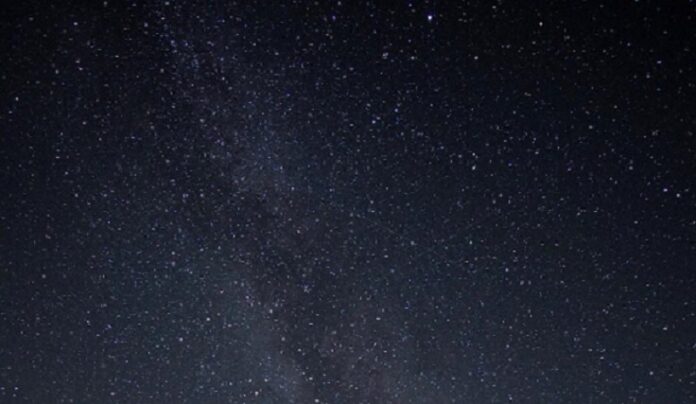Observation of 26 cm радыё signals, formed due to hyperfine transition of cosmic hydrogen offer an alternative tool to the study of early сусвет. As for neutral epoch of the infant сусвет when no light was emitted, 26 cm lines are perhaps only window. However, these redshifted радыё signals emitted by cosmic hydrogen in the early сусвет are extremely feeble and have been elusive so far. In 2018, EDGE experiment reported detection of 26 cm signals but the findings could not be independently confirmed. The main issue was instrument systematic and contamination with the other signals from the sky. The REACH Experiment is to employ unique methodology to overcome the bottleneck. It is hoped that this research group will reliably be able to detect these elusive signals in near future. If successful, REACH Experiment may bring ‘26 cm radio astronomy’ to the forefront in the study of early сусвет and help us much in unravelling the mysteries of early сусвет.
When it comes to the study of ранні сусвет, name of recently launched Касмічны тэлескоп Джэймса Уэба (JWST) pops up in our mind. JWST, a successor of hugely successful Купіна telescope, is a прастору-based, infrared observatory equipped to capture optical/infrared signals from the early stars and galaxies formed in the Сусвет soon after the Big Bang1. Аднак JWST has some limitation so far as picking up signals from the neutral epoch of ранні сусвет занепакоены.
Table: Epochs in the history of сусвет since the Big Bang

(Крыніца: філасофія касмалогіі – фон 21 см. Даступна па адрасе http://philosophy-of-cosmology.ox.ac.uk/images/21-cm-background.jpg)
Up to 380 k years after the big bang, the сусвет was filled with ionised gas and was fully opaque. Between 380k – 400 million years, the сусвет had become neutral and transparent. The epoch of reionisation started after this phase starting 400 million after the big bang.
During the neutral epoch of early сусвет, калі сусвет was filled with neutral gases and was transparent, no optical signal was emitted (hence called dark age). Unionized material does not emit light. This poses a challenge in study of early Сусвет of neutral epoch. However, microwave radiation of 21 cm wavelength (corresponding to 1420 MHz) emitted by the cold, neutral cosmic hydrogen during this epoch as a result of hyperfine transition (from parallel spin to more stable anti-parallel spin) offers opportunities to researchers. This 21 cm microwave radiation would be redshifted upon reaching Earth and will be observed at 200MHz to 10 MHz frequencies as radio waves2,3.
Радыёастраномія 21 см: Observation of 21-centimeter cosmic hydrogen signals offers an alternative approach to the study of early сусвет especially of neutral epoch phase that was devoid of any light emission. This can also inform us about new physics such as distribution of matter over time, dark energy, dark matter, neutrino masses, and inflation2.
However, the 21-cm signals emitted by the cosmic hydrogen during early сусвет phase is elusive. It is expected to be extremely weak (about one hundred thousand times weaker than other radio signals also emanating from the sky). As a result, this approach is still in infancy.
У 2018 годзе даследчыкі паведамілі аб выяўленні такога радыёсігналу на частаце 78 МГц, профіль якога ў значнай ступені адпавядаў чаканням 21-сантыметровага сігналу, выпраменьванага першародным касмічным вадародам.4. Але гэтае выяўленне першапачатковага 21-сантыметровага радыёсігналу не можа быць незалежна пацверджана, таму надзейнасць эксперыменту не можа быць устаноўлена да гэтага часу. Здаецца, галоўная праблема - заражэнне радыёсігналамі на пярэднім плане.
Апошняй вяхой з'яўляецца справаздача аб Радыёэксперыменце для аналізу касмічнага вадароду (REACH) 21 ліпеня 2022 г. REACH будзе выкарыстоўваць новы эксперыментальны падыход для выяўлення гэтых слабых няўлоўных касмічных радыёсігналаў, што дае новую надзею на пацверджанне 21-сантыметровых касмічных сігналаў.
Радыёэксперымент для аналізу касмічнага вадароду (REACH) - гэта 21-сантыметровы эксперымент у сярэднім па небе. Гэта накіравана на паляпшэнне назіранняў шляхам кіравання праблемамі, з якімі сутыкаюцца прыборы, звязаныя з рэшткавымі сістэматычнымі сігналамі ў даных. Ён сканцэнтраваны на выяўленні і сумесным тлумачэнні сістэматыкі разам з пярэднім планам і касмалагічным сігналам з выкарыстаннем байесаўскай статыстыкі. Эксперымент прадугледжвае адначасовыя назіранні з дзвюма рознымі антэнамі, звышшырокапалоснай сістэмай (дыяпазон чырвонага зрушэння прыкладна ад 7.5 да 28) і калібратарам прымача на аснове вымярэнняў у палявых умовах.
This development is significant given its potential to be one of the best tools (and cost effective too vis-a-vis прастору-based observatories like Джэймс Уэб) for study of early сусвет as well as possibility of ushering in of new fundamental physics.
***
Спасылкі:
- Прасад У., 2021. Касмічны тэлескоп Джэймса Уэба (JWST): першая касмічная абсерваторыя, прысвечаная вывучэнню ранняга Сусвету. Навуковая еўрапейская. Апублікавана 6 лістапада 2021 г. Даступна па адрасе http://scientificeuropean.co.uk/sciences/space/james-webb-space-telescope-jwst-the-first-space-observatory-dedicated-to-the-study-of-early-universe/
- Pritchard JA і Loeb A., 2012. 21 см касмалогія ў 21 стагоддзі. Даклады аб прагрэсе ў галіне фізікі 75 086901. Даступна па адрасе https://iopscience.iop.org/article/10.1088/0034-4885/75/8/086901. Прэпрынт на arXiv даступны на https://arxiv.org/abs/1109.6012 PDF версія https://arxiv.org/pdf/1109.6012.pdf
- Оксфардскі універсітэт. Філасофія касмалогіі – фон 21 см. Даступны на http://philosophy-of-cosmology.ox.ac.uk/21cm-background.html
- Bowman, J., Rogers, A., Monsalve, R. і інш. Профіль паглынання з цэнтрам на 78 мегагерцах у сярэднім па небе спектры. Прырода 555, 67–70 (2018). https://doi.org/10.1038/nature25792
- дэ Лера Аседа, Э., дэ Вільерс, ДІЛ, Разаві-Годс, Н. і інш. Радыёметр REACH для выяўлення 21-см вадароднага сігналу ад чырвонага зрушэння z ≈ 7.5–28. Nat Astron (2022). https://doi.org/10.1038/s41550-022-01709-9
- Eloy de Lera Acedo 2022. Адкрыццё таямніц дзіцячага Сусвету з дапамогай радыёметра REACH. Даступны ў Інтэрнэце па адрасе https://astronomycommunity.nature.com/posts/u
***






































